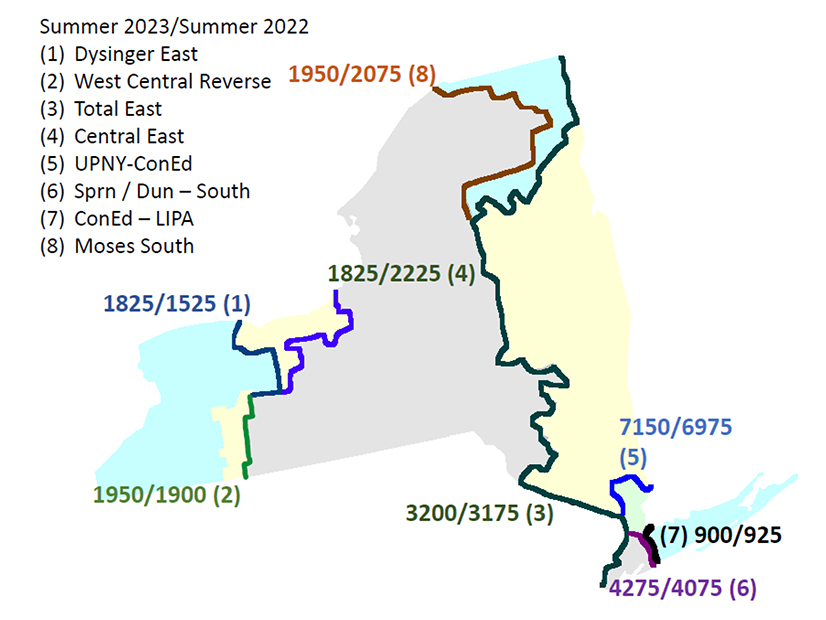Summer Operating Study
NYISO’s Operating Committee on Thursday approved the results of an ISO operating study showing New York’s bulk power system can operate reliably this summer based on transfer capabilities.
Prepared by NYISO’s Operating Studies Task Force, the study estimates internal and external thermal transfer capabilities for the summer based on forecast load and dispatch assumptions, as well as any generation or transmission changes occurring since last year. The external analysis covers the ISO’s adjacent balance areas of ISO-NE, PJM and Ontario’s IESO.
The study showed notable changes in internal thermal transfer limits, including a 300-MW increase for the Dysinger East interface and a 400-MW decrease for the Central East interface.
Dysinger East increased due to the redistribution of flows attributed to changes in load pattern in the West and Genesee areas, while the Central East interface decreased due to the modeling of Segment A’s December in-service date. The Segment A project refers to the alternating current transmission projects identified as being needed to increase the Central East transfer capability by at least 350 MW and unbottle the congested region.
A change to external transfer limits was seen in the NYISO-to-Ontario and Ontario-to-NYISO interfaces, which both increased by 100 MW or more due to thermal rating changes for the Niagara–Beck (PA27) 230-kV direct tie line.
NYISO reported that 1,007 MW of fossil-fuel based generating capacity was deactivated and that 1,045 MW of renewable generation was added since last year’s study.
Utility Loss of Gas Studies
The OC approved loss-of-gas-supply study results from Consolidated Edison and PSEG Long Island, which verified loss of gas or minimum oil burn requirements for the coming summer capability period.
Both utilities found that dual-fuel generation would remain necessary during periods of above-average demand, but based on anticipated dispatch conditions, the two studies results remain largely the same as last year.
April Operations Report
NYISO told the OC that 104 MW of land-based wind and 101 MW of solar resources were added in April, and that load peaked for the month at 18,915 MW on April 14.
NYISO also included a new detail in its report: that the month’s minimum load of 11,742 MW occurred April 9. The ISO will be including this data point in its future monthly operations reports to show the impact of increasing behind-the-meter solar generation on loads.
